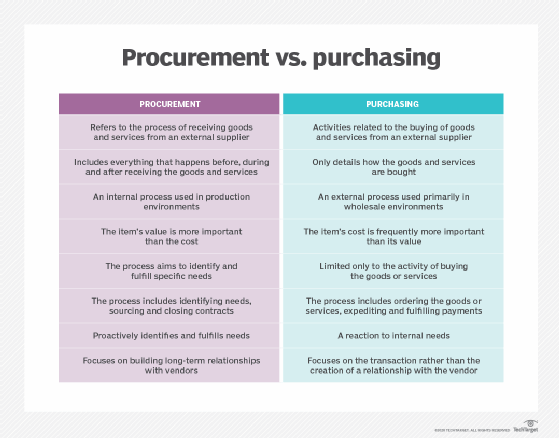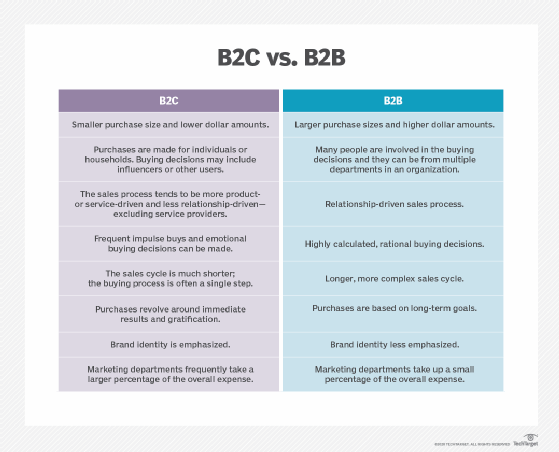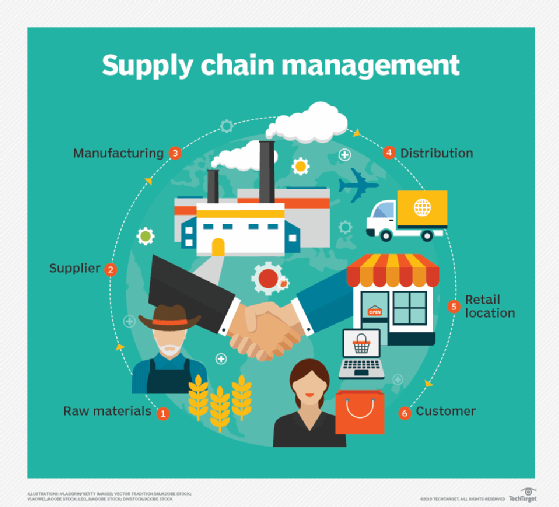e-procurement (supplier exchange)
What is e-procurement?
Electronic procurement, also known as e-procurement or supplier exchange, is the process of requisitioning, ordering and purchasing goods and services online. It is a business-to-business process.
Unlike e-commerce, e-procurement utilizes a supplier's closed system and is only available to registered users. E-procurement facilitates interactions between preferred suppliers and customers through bids, purchase orders and invoices.
E-procurement started in the 1980s, following the development of Electronic Data Interchange (EDI). A decade later, improvements in EDI allowed organizations to develop online catalogs for vendors. Today, e-procurement involves everything from supplier evaluation and selection to contract management, electronic orders and payments.
E-procurement uses a web interface or some other kind of networked system that connects suppliers and customers. In the enterprise, a chief procurement officer or procurement department usually sets the policies governing the e-procurement of materials for the organization.

The goal of using an e-procurement system is to acquire products or services at the best possible price and at the best possible time. To meet this objective, it's important for businesses to establish relationships with suppliers. This enables procurement personnel to negotiate contracts with suppliers. They can also set guidelines or limits around budgets and spending within the e-procurement platform.
How does e-procurement work?
E-procurement eliminates the need to manually carry out laborious, procurement-related tasks such as eAuctions and eTenders, exchanging supplier contracts and filling out supplier onboarding questionnaires.
The process works by connecting various entities and processes through a centralized platform. Vendor management/supplier management is one of the most important aspects of e-procurement. It involves both supplier relationship management and supplier information management.
Other key components in e-procurement include the following:
- e-sourcing: requirements definition and pre-qualifying potential suppliers;
- e-tendering: request for information, proposals and quotations;
- e-auctioning: evaluating suppliers, negotiation and contract management;
- e-ordering and payment: creating requisitions and purchase orders, and receiving ordered items; and
- analytics: view spends and take corrective measures as required.
Finally, e-informing is vital in the e-procurement process. It involves a two-way exchange of information between all parties involved in the process to generate mutually beneficial outcomes.

E-procurement software
E-procurement software facilitates the e-procurement process. It also enables procurement staff to automate various activities, functions and procedures, including policies, contracts and vendor relationships.
Although available functions and features vary among vendors, the software's biggest advantage is that it streamlines the procurement process and eliminates manual or paper-based activities.
Many e-procurement systems provide tools that allow procurement managers to customize the procurement experience. They can also:
- determine which items will be available to which users;
- control who can view the budget information;
- control who can approve purchase requisitions; and
- control who can view and pay invoices.
Many e-procurement platforms can be accessed over mobile devices like smartphones and tablets.
What are the benefits of e-procurement?
E-procurement helps automate the procurement process. Centralized transaction tracking, simplified reporting and contract compliance helps reduce delivery times and shorten procurement cycles.
Automated systems and built-in monitoring tools reduce the overhead for procurement teams, optimize performance, increase process efficiency and achieve cost savings. They also help limit maverick spending, which happens when employees procure products "off contract," i.e., when they make purchases outside the parameters set in negotiated and in-force contracts.
With e-procurement, companies have access to a larger selection of products and services to meet their specific needs. The ability to quickly locate products from their preferred suppliers or vendors helps control inventory size and costs.
Since the procurement department is freed from manual, repetitive or low-value tasks, it can redirect resources to higher value activities, such as contract negotiations.
E-procurement also delivers better reporting of procurement trends and metrics, and increases visibility into enterprise procurement spending. Since all information is centralized, company management or stakeholders can easily access it to improve decision-making. It thus increases process transparency and accountability and enables better control over the procurement function.
What are the challenges of e-procurement?
Implementing an e-procurement application comes with potential challenges, particularly around installing and integrating the software with other enterprise back-end systems.
Training employees to use it is another challenge. Additionally, companies must work with suppliers to ensure a smooth transition to the new online system.
E-procurement applications and supply chain management
E-procurement applications allow the procurement office to manage purchases. They can also do the following:
- search through online catalogs;
- select the desired items that match the organization's parameters for cost, quality and supplier;
- submit requisitions; and
- track delivery status.
E-procurement is beneficial for supply chain management, particularly for procuring indirect materials, i.e., any items that are not directly involved in producing the final product sold by the organization. This category of goods typically includes office supplies, janitorial and facilities supplies and other lower cost items.

However, e-procurement may not work well for every type of purchase. For example, it may not work for procuring mission-critical items available through only a few suppliers.
It may also not work where:
- inventories are running low;
- procuring items involves complex negotiations; and
- the potential to lower costs through an e-procurement platform is minimal.
See also: IT procurement, green procurement, sustainable procurement





